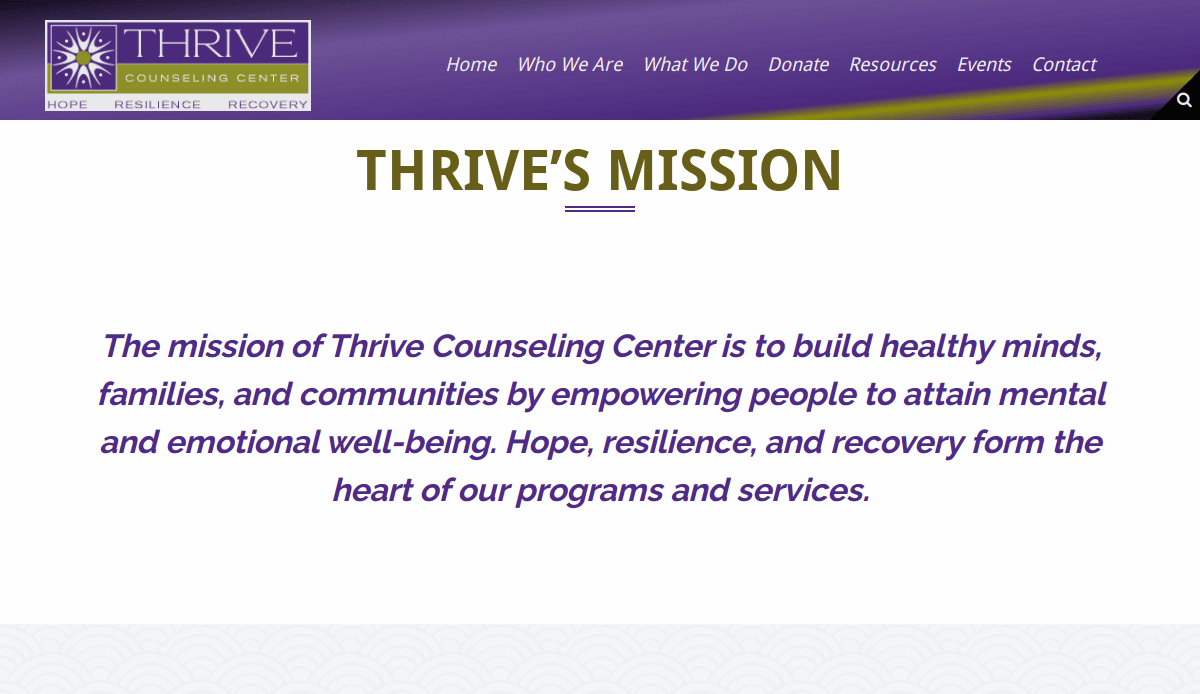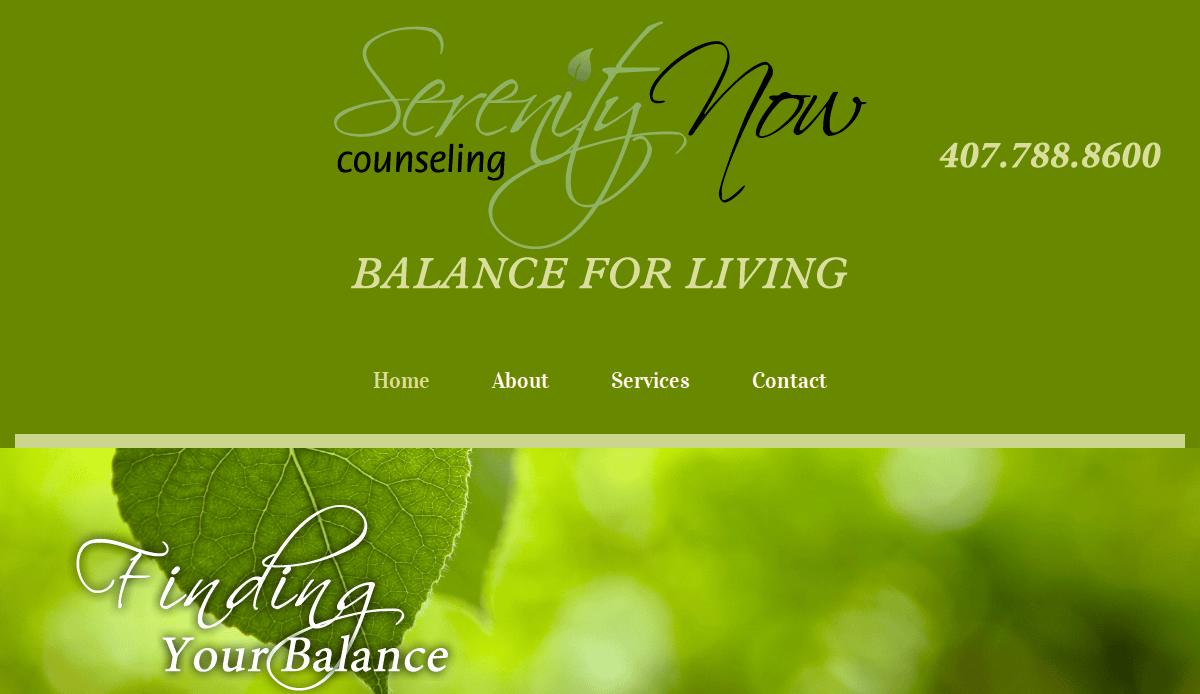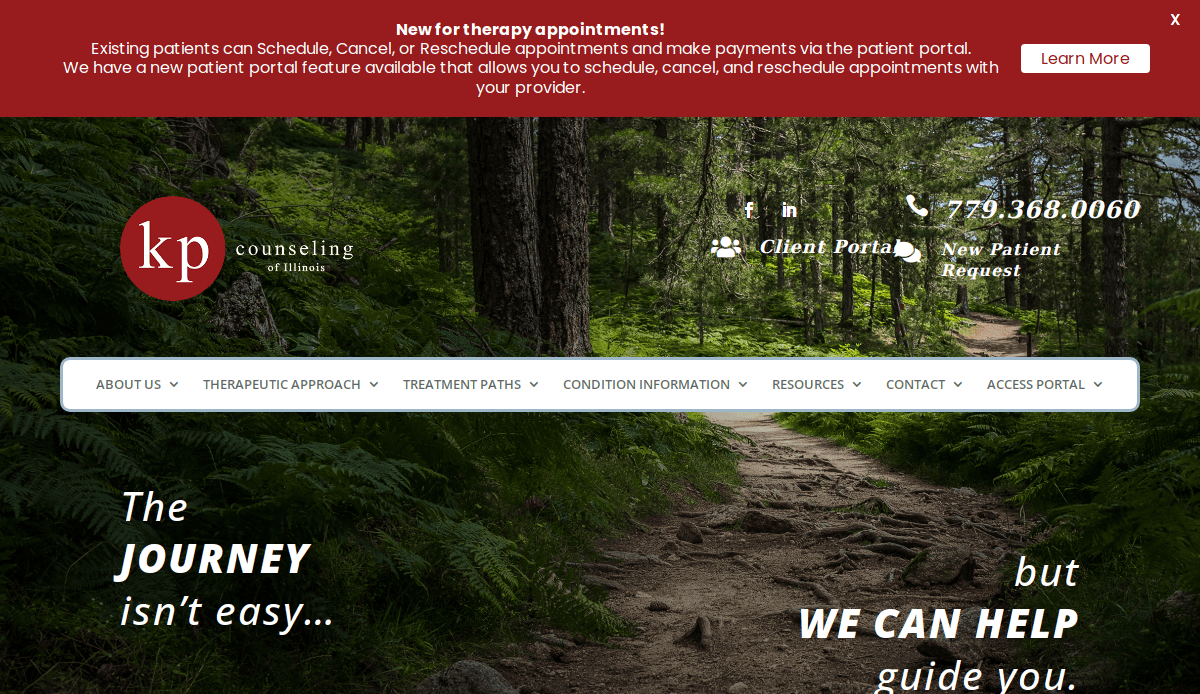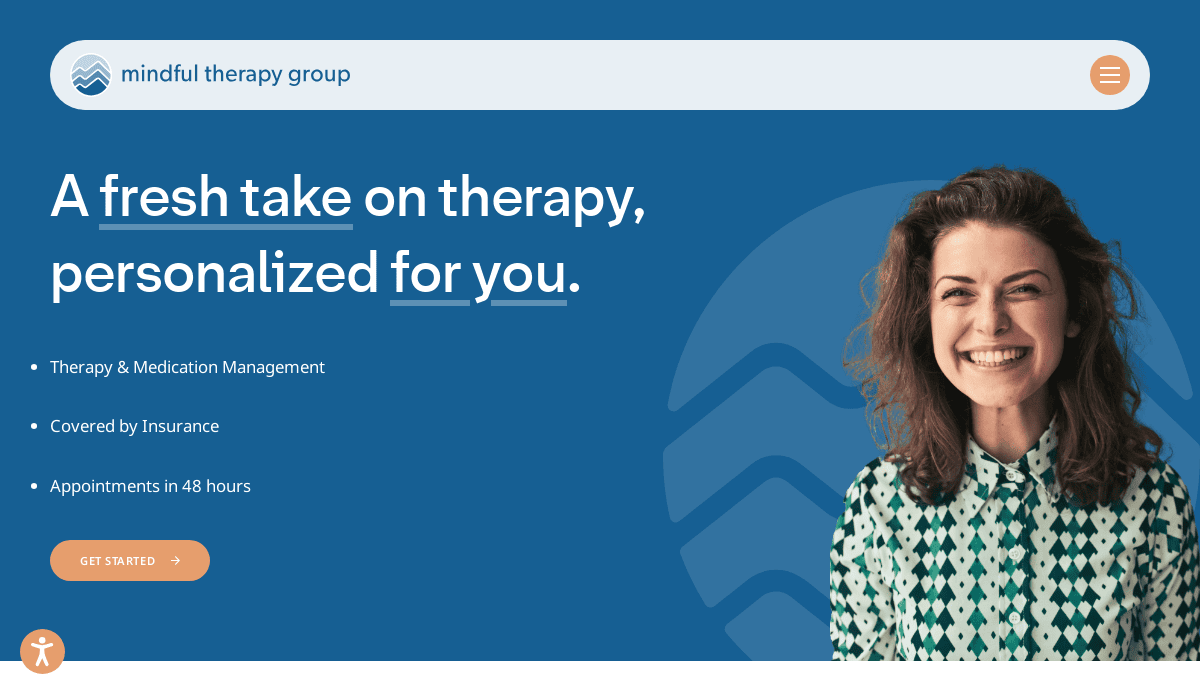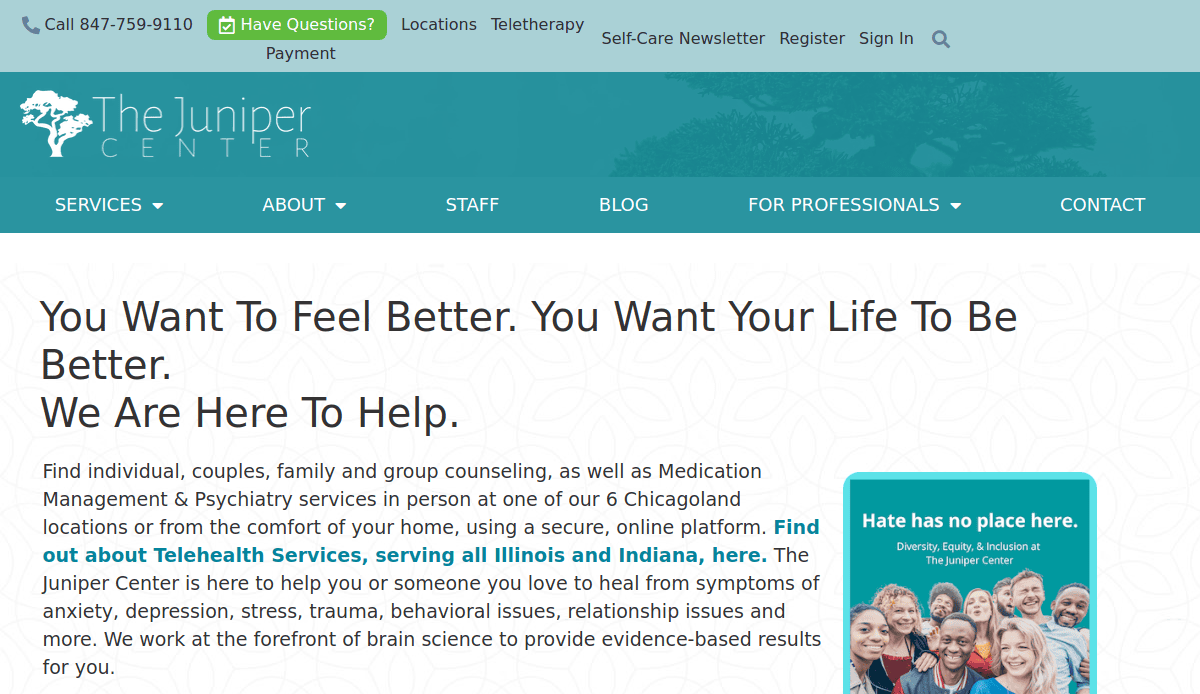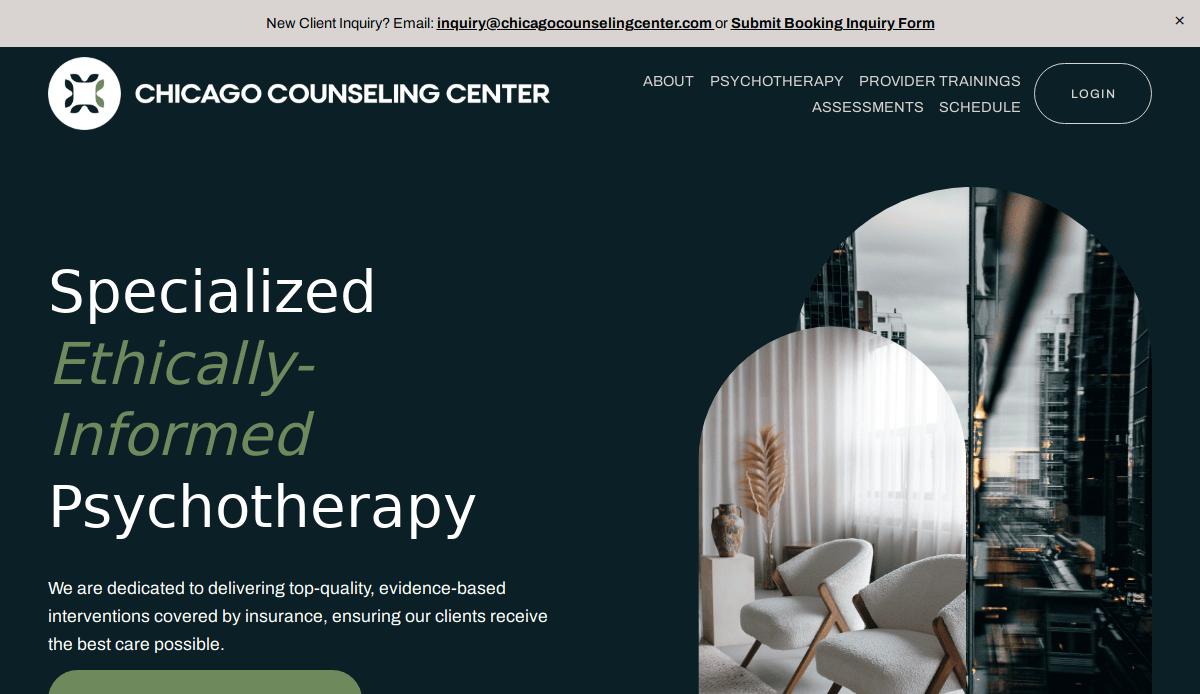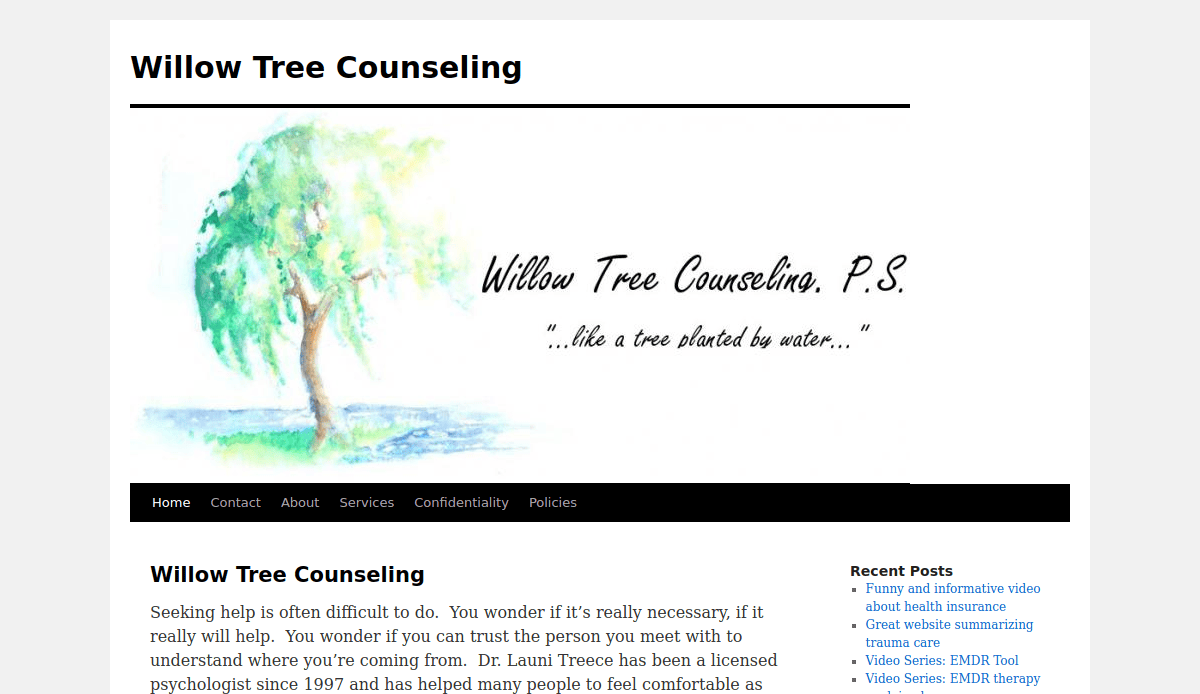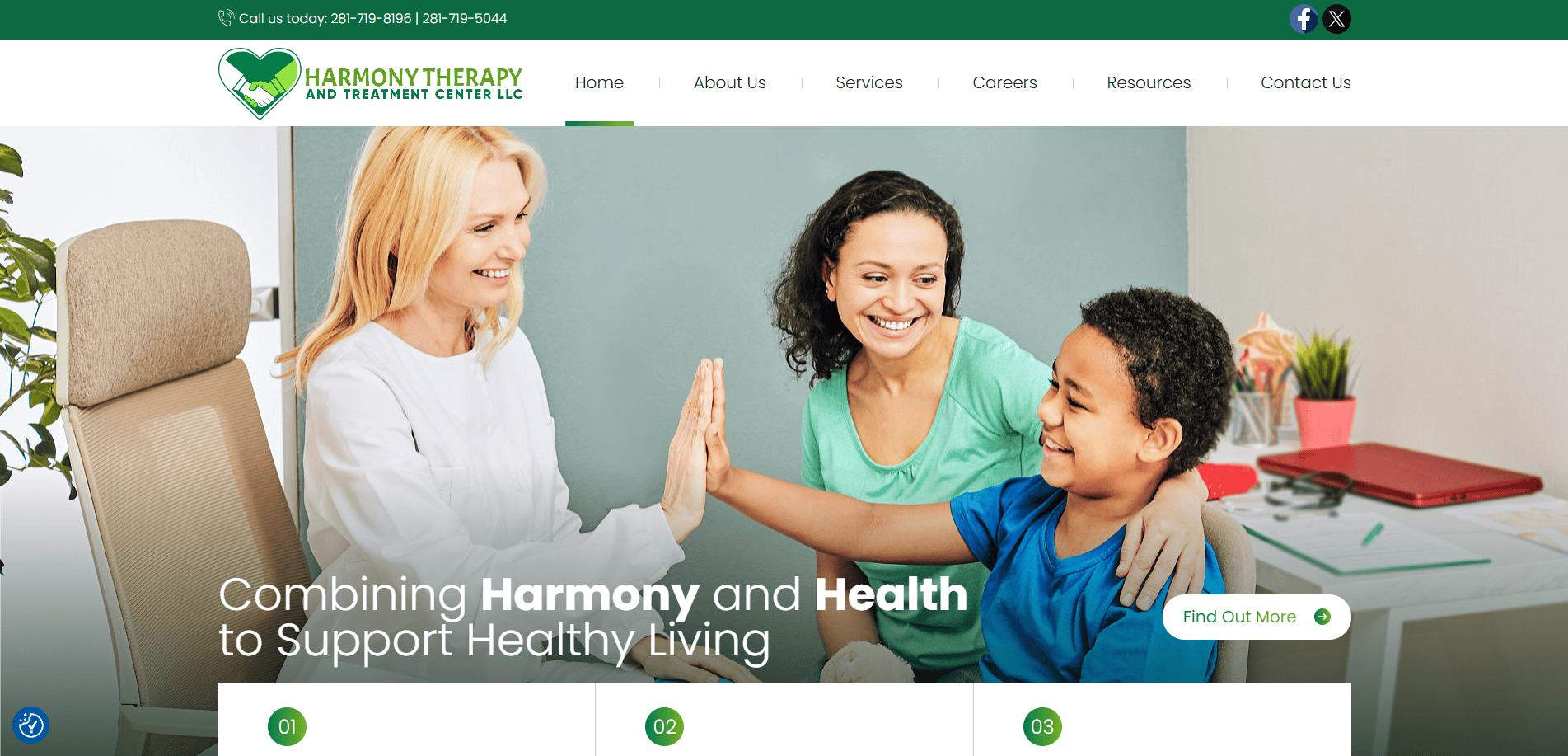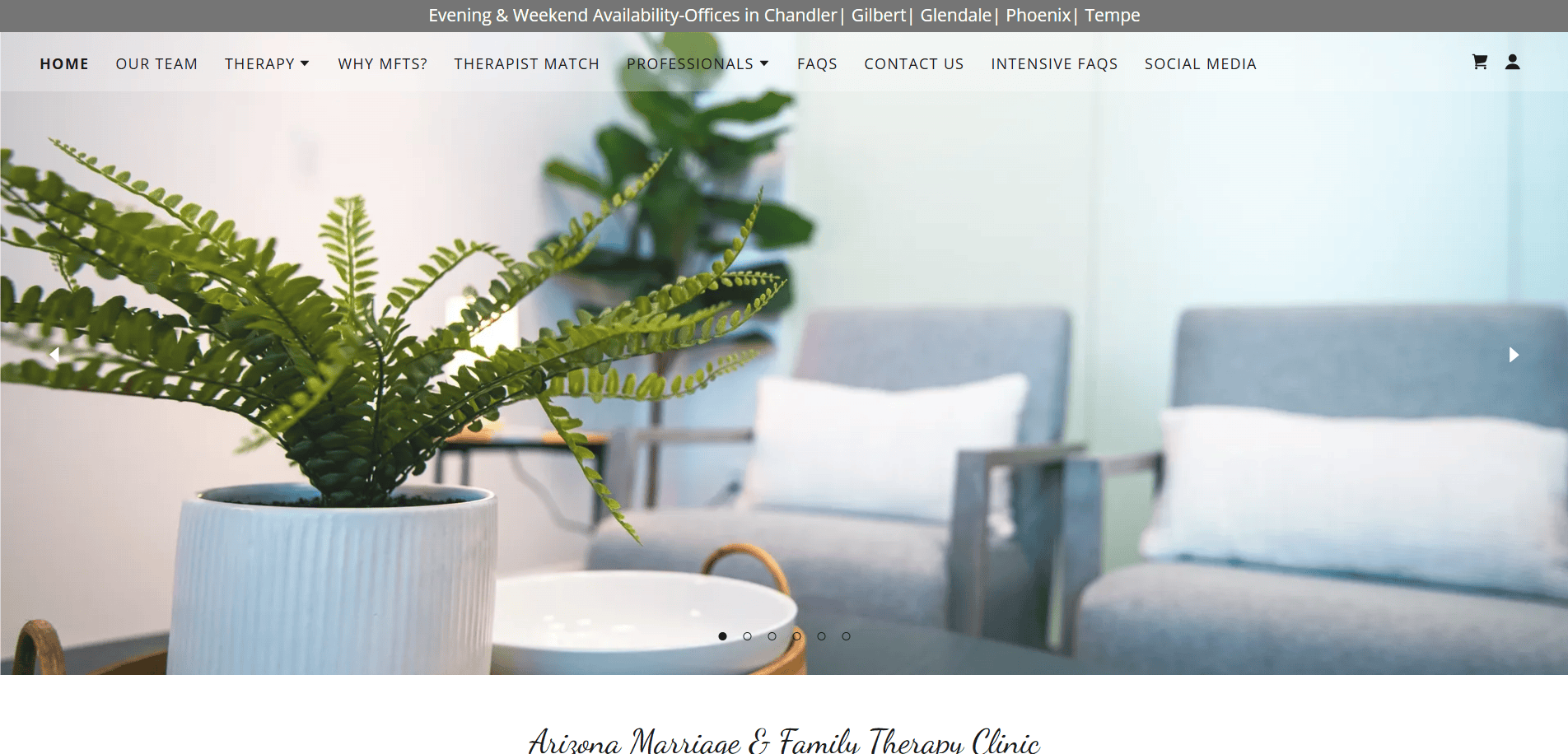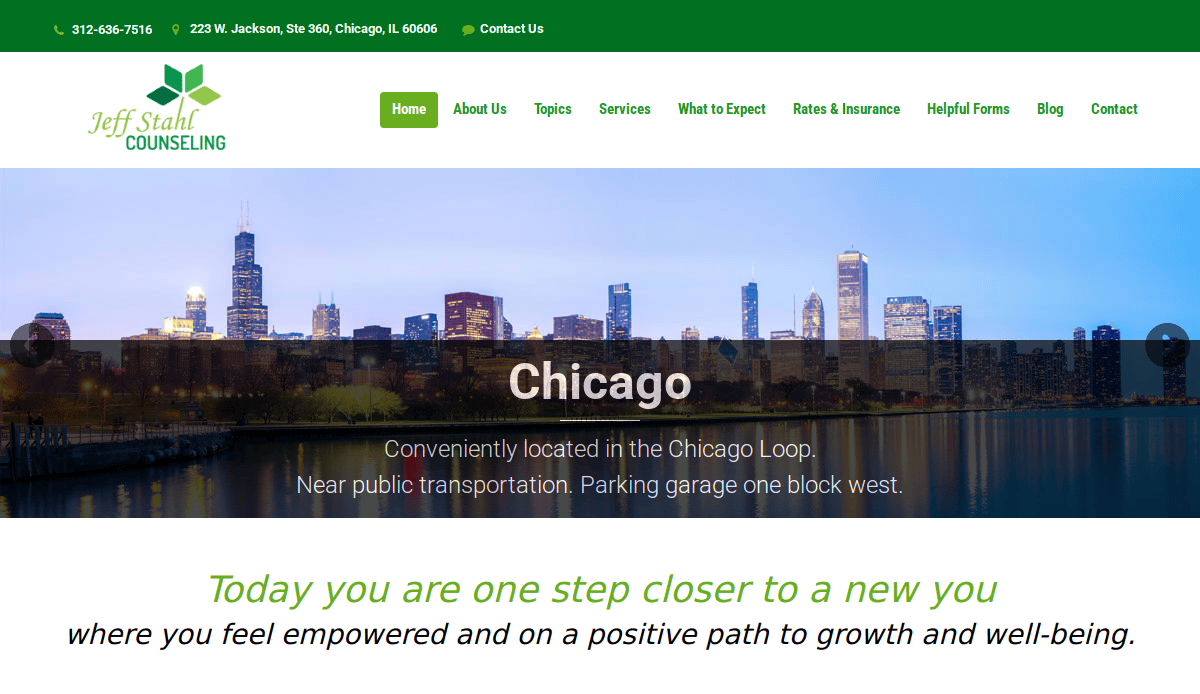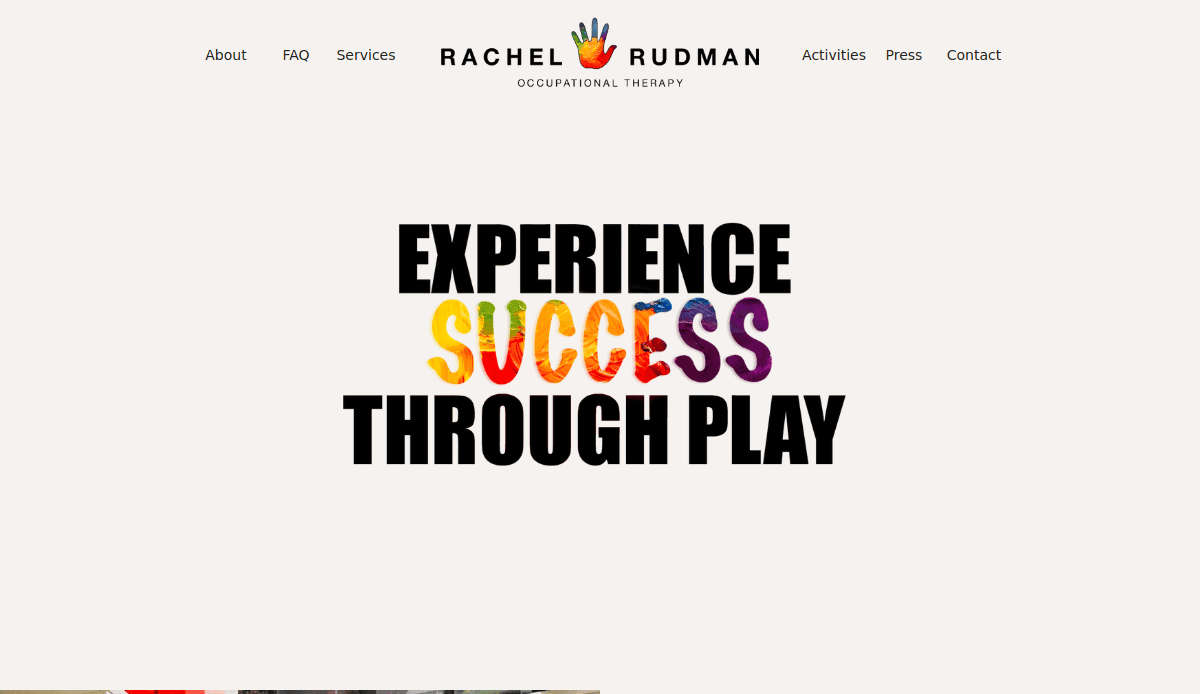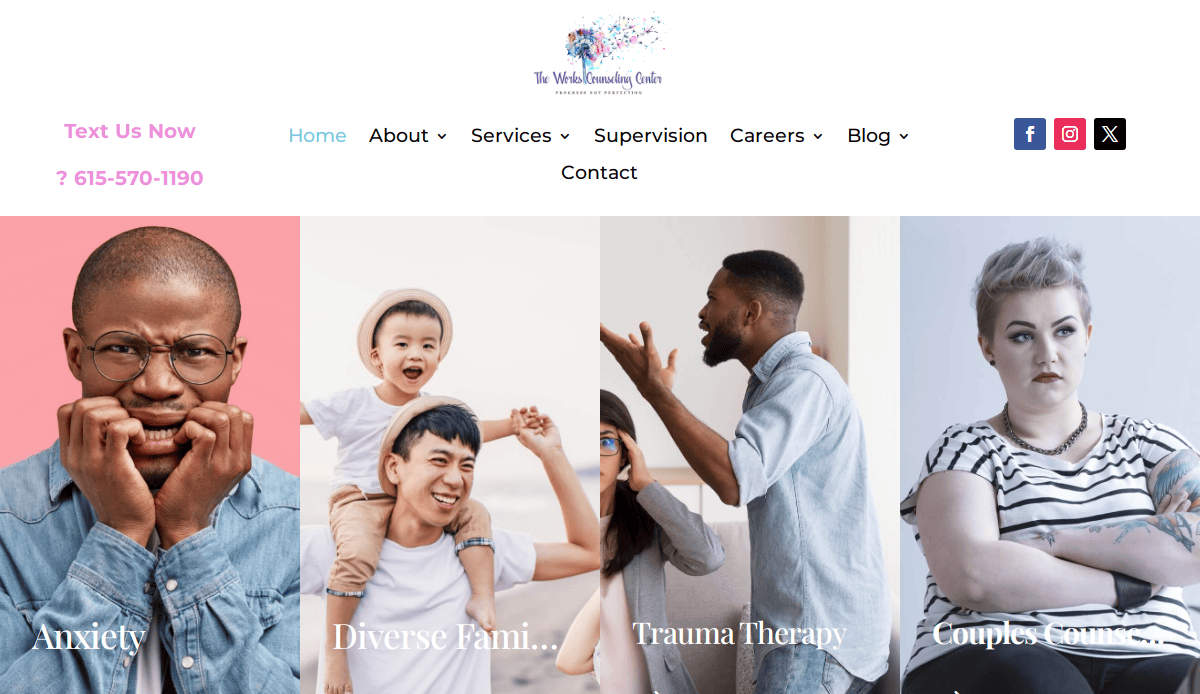Just looking for our Best Therapist Website examples list?
Key Takeaways: What You’ll Learn
- A successful site design for therapists balances aesthetics with trust-building functionality.A visually appealing site that reflects professionalism and warmth helps build immediate trust with prospective clients, making them more likely to schedule an appointment.
- SEO-optimized, user-focused content is crucial to getting found online.Strategic use of keywords like “therapist website design” and “private practice” across key pages boosts visibility and ensures your site attracts the right kind of traffic—those actively looking for your services.
- Strategic structure and conversion elements drive inquiries.Clear navigation, compelling calls-to-action (CTAs), mobile responsiveness, and fast loading times aren’t just good design—they directly influence lead generation by making it easy for visitors to take the next step.
Why Web Design Matters for Therapists
Your website is often the first impression a potential client gets of your therapy practice—and in today’s digital-first world, that impression can make or break their decision to reach out. A thoughtfully designed therapist website isn’t just about looking good—it’s about building trust, demonstrating professionalism, and creating an environment that feels safe and welcoming.
Whether you’re launching a new private practice or refreshing an outdated site, investing in a high-performing website directly impacts your business results. Great design improves search visibility, enhances user experience, and ultimately drives more inquiries. As experienced professionals in web design and digital marketing, we’d like to explore what makes a therapist’s site successful, what pages and design elements matter most, and how you can turn your site into a powerful tool for growing your practice.
Website Planning & Purpose: Start With Strategy
Before diving into design and development, the most effective websites begin with a clear strategic plan. In this industry, your site isn’t just a marketing tool—it’s a virtual extension of your practice. Planning ensures every design decision serves your overall business goals, whether that’s attracting new clients, improving client intake processes, or strengthening your brand.
Start by identifying the core purpose of your website. For most therapists, that purpose includes:
- Presenting your services clearly and professionally
- Creating an emotional connection through authentic imagery and messaging
- Making it easy for potential clients to understand how to work with you
- Improving your visibility through search engine optimization (SEO)
Define your ideal client and their needs before outlining the site structure. Ask yourself: What questions do potential clients have before booking a session? What fears or hesitations might they need reassurance about? Addressing these insights up front allows you to map out a website that is intuitive, supportive, and compelling.
This planning phase also includes practical considerations like selecting a user-friendly platform, integrating appointment scheduling, and ensuring HIPAA compliance where necessary. A well-planned website doesn’t just look good—it aligns with your practice goals and gives your visitors the confidence to take that first step toward healing.
Design Principles: Foundations of a High-Converting Site
Effective website design is grounded in a few key principles that support emotional engagement and functional clarity. These principles help guide visitors toward taking meaningful action, such as scheduling a consultation, while making them feel comfortable and understood.
1. Clarity & Simplicity
A clean, uncluttered layout reduces cognitive load and helps users quickly find the information they need. Use whitespace strategically to give your content room to breathe, and avoid overwhelming visitors with too much text or too many choices.
2. Visual Hierarchy
Organize content in a way that naturally guides the eye. Use clear headlines, subheads, bullet points, and images to create a flow that leads visitors from one section to the next. Important elements—like your primary call-to-action—should stand out visually.
3. Brand Consistency
Your website should reflect your practice’s identity through consistent use of color, typography, imagery, and tone. For therapists, this often means a palette that feels calm and reassuring, fonts that are easy to read, and photos that convey warmth and professionalism.
4. Accessibility
Your site should be easy for everyone to use, including those with visual or motor impairments. This includes readable text contrast, alt tags for images, keyboard navigation, and mobile responsiveness.
5. Trust Signals
Include design elements that establish credibility, such as professional photos, testimonials, certifications, and clear contact information. These reassure prospective clients that you are a qualified and trustworthy provider.
6. Conversion-Oriented UX
Every page should be designed with a clear goal in mind—typically, encouraging contact or booking. Use intuitive navigation, sticky headers, and strategically placed CTAs to make taking the next step simple and seamless.
Content & Navigation: Guide Visitors with Intention
When it comes to layout, how you organize your content and navigation directly influences how visitors interact with your brand. A thoughtful structure builds trust, reduces confusion, and ensures potential clients can easily find the information they need to take the next step.
Start With a Clear Sitemap
Before any content is written, outline a sitemap with the essential pages:
- Homepage– A warm, welcoming overview of your practice
- About Page– Share your qualifications, philosophy, and personal story
- Services Page– Clearly list therapy services offered, including modalities and specialties
- FAQs– Answer common questions around therapy sessions, costs, and logistics
- Contact Page– Include a contact form, phone number, email, and location
- Blog (Optional)– Share helpful advice, thought leadership, and boost SEO
Content That Speaks to the Client’s Journey
Each page should anticipate the questions and emotions your visitors are experiencing. Use plain language to describe how your therapy process works and what clients can expect. Avoid clinical jargon and write like you’re speaking directly to someone who’s never been to therapy before.
Incorporate testimonials, brief success stories, or anonymized quotes to validate your services. These human touches make the site more relatable and emotionally resonant.
Navigation Should Be Intuitive
Top navigation should be minimal and predictable—limit it to 5–7 main menu items. Use dropdowns if needed, but keep them clear. Include persistent “Contact” or “Book Now” CTAs on every page, either in the header or as a sticky button.
Don’t forget mobile users: ensure that navigation menus are responsive, accessible, and don’t block content or CTAs.
Use Visual and Structural Aids
Break up text with headings, images, and bullet points. Each page should feature one clear CTA guiding the user toward the next step: booking a session, reading more, or contacting you directly.
Visual Elements: Bring Your Brand to Life
Visual elements do more than make a therapist’s website attractive—they play a pivotal role in creating emotional resonance, reinforcing brand identity, and enhancing usability. The right visuals can make a visitor feel seen, safe, and confident in your professionalism, encouraging them to engage more deeply with your content.
Photography That Builds Connection
Use high-quality, authentic images that reflect the diversity and emotional tone of your client base. Avoid generic stock photos and instead opt for visuals that show calm, real-life settings, or natural expressions of people in conversation or reflection. Your own professional headshots add an important human touch.
Color Psychology and Brand Mood
Color palettes for therapist websites should be soft, soothing, and aligned with the emotional environment you wish to create—think blues for calmness, greens for healing, and neutrals for grounding. Avoid overly bright or harsh colors that may feel too commercial or impersonal.
Typography That Enhances Clarity
Choose clean, readable fonts with sufficient size and spacing. Limit the number of font families to two—one for headings, one for body text—to maintain visual harmony. Avoid stylized or script fonts that can hinder readability, especially on mobile devices.
Iconography and Illustrations
Subtle icons can be used to guide attention and clarify navigation (e.g., phone, location, calendar icons). Custom illustrations or soft graphics can also be used to express your brand’s personality and make your site feel more bespoke and welcoming.
Video and Motion Elements
Thoughtfully placed video, such as a short welcome message or practice overview, can be an effective tool for building rapport and increasing time-on-site. Keep videos short, relevant, and captioned for accessibility. Use motion sparingly to enhance key actions like button hovers or transitions without overwhelming the user.
Ongoing WordPress Maintenance: Keep Your Therapy Website Healthy and Secure
For therapists who choose WordPress as their website platform, ongoing maintenance is not optional—it’s essential. A well-maintained website remains secure, performs optimally, and continues to support your business goals over time.
Security Updates and Backups
WordPress, like all platforms, can be vulnerable to hacking if not kept up to date. Regular updates to the WordPress core, themes, and plugins are critical to patch vulnerabilities. Automated daily backups ensure that your site can be quickly restored in the event of an issue.
Plugin and Theme Management
Outdated or incompatible plugins can cause site crashes, security risks, or slow load times. Keep your plugins and themes updated, and periodically audit them to remove anything unused or unnecessary.
Performance Monitoring
Therapist websites must load quickly and function smoothly, especially for mobile users. Use tools like Google PageSpeed Insights to regularly assess load times and optimize performance factors such as image compression, caching, and script handling.
SEO and Content Audits
Maintenance isn’t just technical—it’s also about staying relevant. Review your site’s SEO performance monthly. Refresh outdated blog posts, optimize for new keywords, and make sure your meta descriptions and title tags reflect your latest services.
Accessibility and Legal Compliance
Check your site’s accessibility regularly to ensure it meets ADA and WCAG guidelines. Also, verify that privacy policies, terms of service, and cookie consent mechanisms are up to date and legally compliant.
By investing in regular WordPress maintenance, therapists protect their site and ensure it continues to attract and convert clients effectively over the long term. Partnering with a professional maintenance provider like us can give peace of mind while allowing you to focus on client care.
As promised, here are some industry-relevant example sites to inspire your own design vision.
Best Therapist Website Examples
1. Couch Clarity
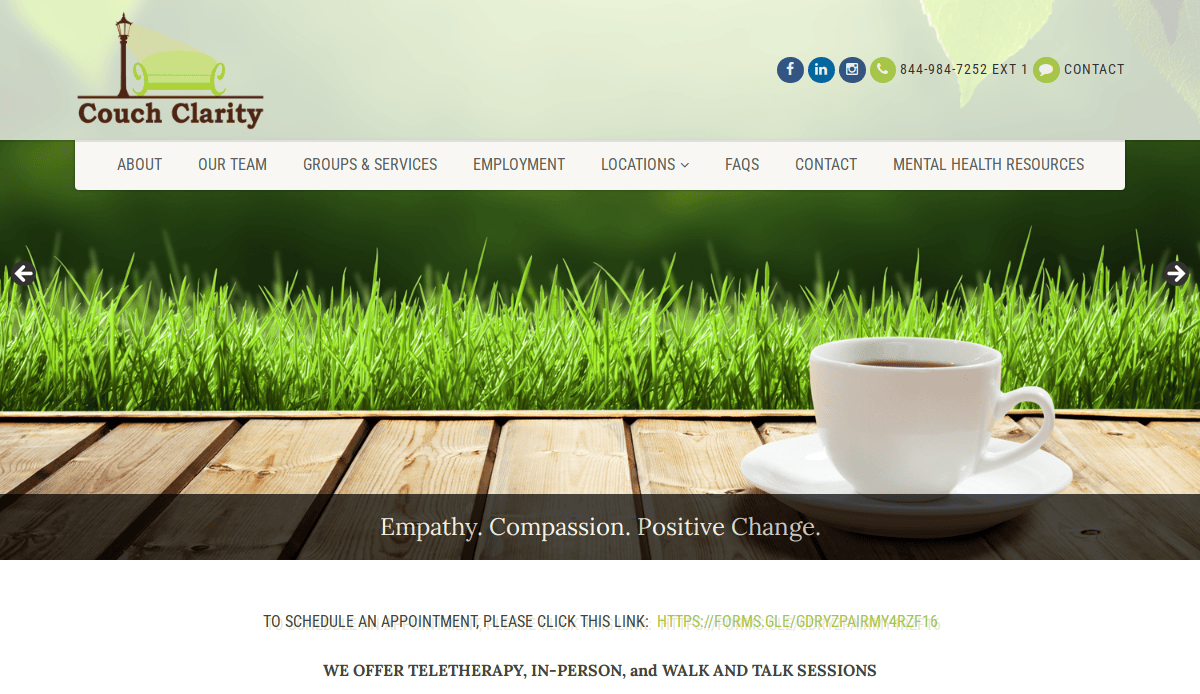
Location: Chicago, IL
Key Takeaways:
- Clean, professional design with a calming color scheme.
- Intuitive navigation with well-placed call-to-action buttons.
- Offers a range of services, including unique “walk & talk” sessions.
2. Evolve Neurocounseling
Location: Phoenix, AZ
Key Takeaways:
- Vibrant visuals that reflect the transformative journey of clients.
- Clear presentation of services and specialties.
- Easy-to-use contact form facilitating client outreach.
3. Thrive Counseling Center
Location: Oak Park, IL
Key Takeaways:
- Engaging homepage with clear value propositions.
- Detailed staff bios build trust with potential clients.
- Online appointment scheduling enhances user convenience.
4. Serenity Now Counseling
Location: Indianapolis, IN
Key Takeaways:
- Minimalist design emphasizing essential information.
- Prominent call-to-action encouraging immediate contact.
- The blog section offers valuable mental health insights.
5. The Center for Mindful Living
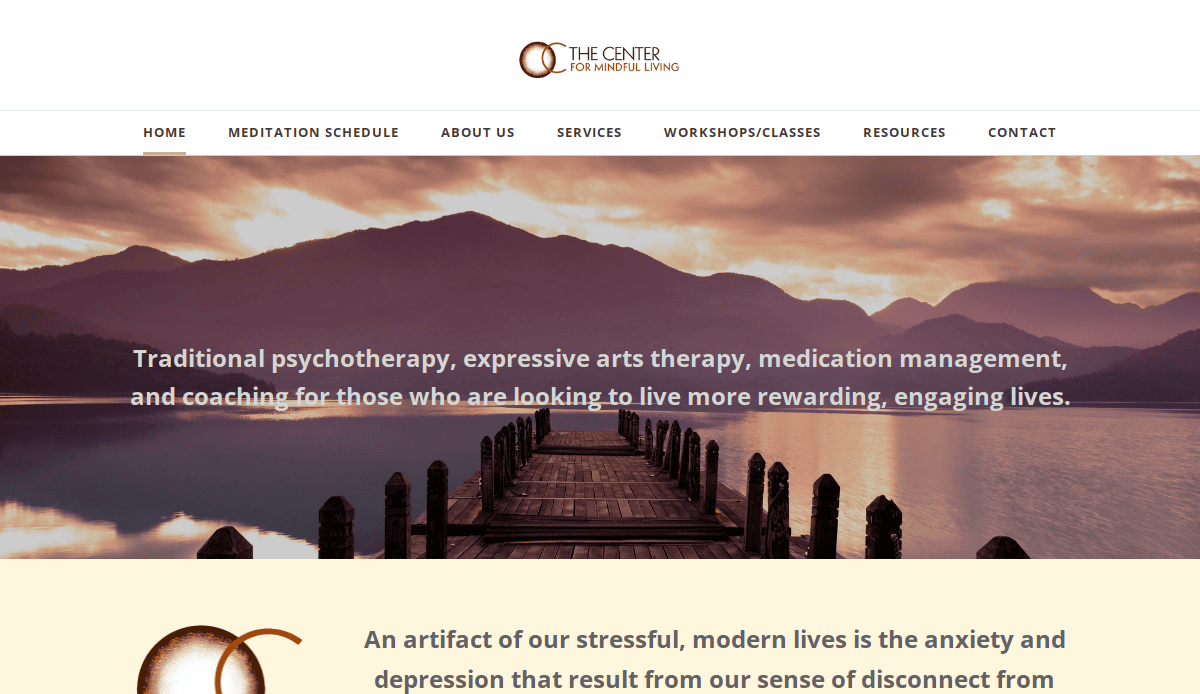
Location: Omaha, NE
Key Takeaways:
- Tranquil visuals align with mindfulness practices.
- Event calendar promoting community engagement.
- Resource library supporting client education.
6. Urban Balance
Location: Chicago, IL
Key Takeaways:
- Professional layout with easy access to multiple locations.
- Diverse team profiles catering to various client needs.
- Online booking system streamlines appointment setting.
7. Insight Counseling Centers
Location: Nashville, TN
Key Takeaways:
- Compassionate messaging resonates with visitors.
- Clear outline of services and insurance information.
- Donation portal supporting nonprofit operations.
8. Mindful Therapy Group
Location: Seattle, WA
Key Takeaways:
- Comprehensive directory of therapists for client matching.
- User-friendly interface simplifies the search process.
- Informative blog enhancing site engagement.
9. The Juniper Center
Location: Park Ridge, IL
Key Takeaways:
- Modern aesthetic appeals to a broad audience.
- Extensive list of specialties accommodating diverse needs.
- Online resources supporting client growth.
10. Chicago Counseling Center
Location: Chicago, IL
Key Takeaways:
- Clean layout with straightforward navigation.
- Emphasis on evidence-based practices builds credibility.
- Easy-to-find contact information facilitates outreach.
11. Willow Tree Counseling
Location: Portland, OR
Key Takeaways:
- Nature-themed visuals align with healing concepts.
- Clear service offerings with transparent pricing.
- Easy navigation enhances user experience.
12. Aspire Counseling Group
Location: Boston, MA
Key Takeaways:
- Professional design with a focus on client empowerment.
- Clear descriptions of therapy approaches used.
- Online scheduling improves accessibility.
13. Harmony Therapy Center
Location: Seattle, WA
Key Takeaways:
- Soothing visuals promote a sense of peace.
- Detailed therapist profiles aiding in informed choices.
- Resource section supporting client education.
14. Arizona Marriage & Family Therapy Clinic
- Location:Phoenix, AZ
- Key Takeaways:
- Vibrant visuals that reflect the transformative journey of clients.
- Clear presentation of services and specialties.
- Easy-to-use contact form facilitating client outreach.
15. Chicago Personal Growth Institute (CPGI)
- Location:Chicago, IL
- Key Takeaways:
- Elegant and visually stunning design with green as a primary color.
- Consistent and visually appealing design throughout its pages.
- Comprehensive platform for individuals seeking therapy and personal growth services.
16. Angie Richey
Location: Los Angeles, CA
Key Takeaways:
- Professional layout highlighting services and expertise.
- Combination of fonts and images enhances readability.
- Clear call-to-action guiding visitors to learn more.
17. Rachel Rudman Occupational Therapy
Location: New York, NY
Key Takeaways:
- Vibrant visuals showcase the therapy environment.
- Clear descriptions of services and specialties.
- Interactive elements engage visitors.
18. Works Counseling Center
Location: Nashville, TN
Key Takeaways:
- Engaging visuals that communicate therapy offerings.
- Clear navigation with distinct sections for different therapy types.
- The blog section provides valuable mental health insights.
19. Couples Learn
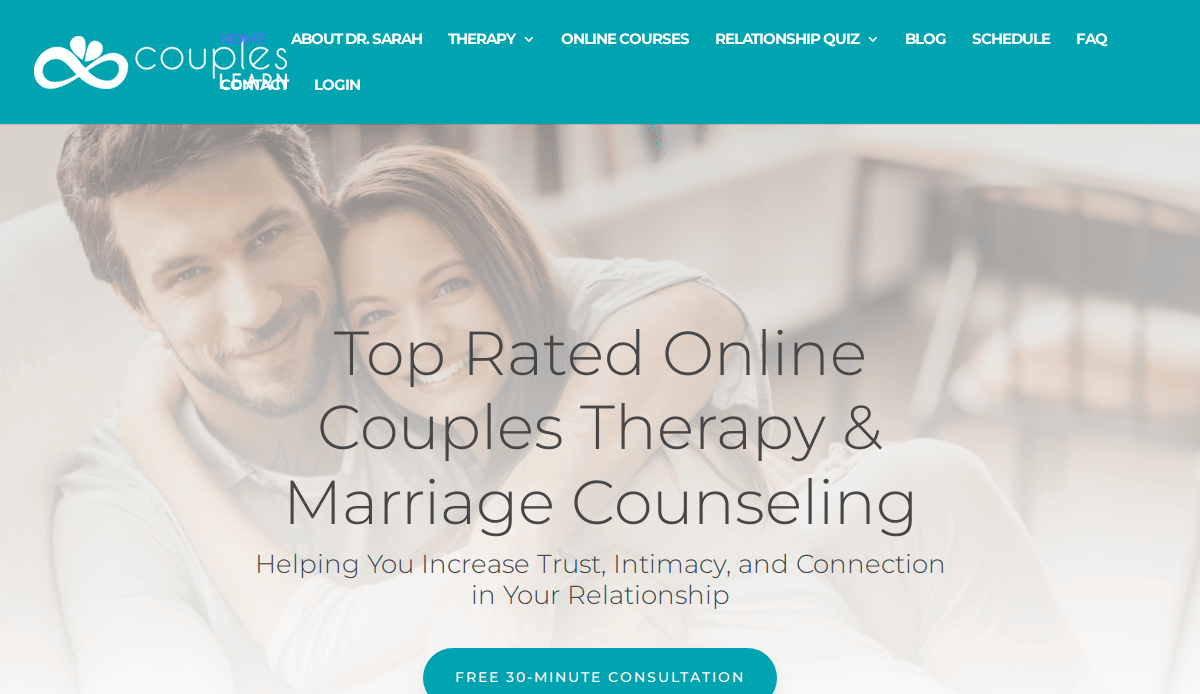
Location: Los Angeles, CA
Key Takeaways:
- Specialized Focus:Tailored services for couples and individuals seeking relationship therapy.
- User-Friendly Design:Mobile and desktop viewing are equally user-friendly.
- Educational Resources:Easily accessible blogs and testimonials that add a personal touch and credibility.
These examples showcase the expertise in creating effective, user-friendly websites tailored to the needs of therapy practices. If you’d like our assistance with a free website audit, feel free to ask!
Ready to Create a Website That Attracts and Converts?
If you’re ready to elevate your online presence, now is the perfect time to create a website that reflects your expertise, supports your private practice, and drives real results. We help therapists like you move beyond generic templates and build customized, conversion-ready websites that earn trust and generate leads.
Whether you need a brand-new design or a strategic overhaul of your existing site, we’ll guide you through every step—from planning to launch to ongoing support.
Get started with our website design services today and take the first step toward growing your practice online.
Therapist Site Design Frequently Asked Questions (FAQs)
What makes a great therapist website?
A great therapist website combines a clean layout, emotionally resonant visuals, and thoughtful website copy to build trust and professionalism. It should be easy to navigate, optimized for SEO, and feature clear calls to action that help website visitors take the next step.
How do I design a private practice website that converts?
Designing a website for your private practice starts with understanding your ideal client. Include pages you need, like services, FAQs, and contact. Use a professional web designer experienced in therapy site design to ensure the site reflects your brand and is optimized for SEO for therapists.
What pages should a website for my psychotherapy practice include?
Your psychotherapy website should include: Home, About, Services for therapists, FAQs, Contact, and possibly a Blog. Each should reflect your brand, be easy to navigate, and include effective web copy with CTAs.
Should I use a website builder or hire a professional web designer?
While a website builder might seem cost-effective for a new website, a poorly designed website can hurt your credibility. A professional design team ensures your website serves your goals and helps you attract more clients with an attractive website and optimized web copy.
How does SEO help websites for therapists?
SEO for therapists ensures your website gets found by people looking for a therapist in your area. Optimizing your website helps it rank on the first page of Google, bringing more website visitors and increasing client inquiries.
Can I customize the look and feel of my therapy website?
Absolutely. A customized website can feature a unique therapist brand identity through personalized layouts, a custom therapist logo, engaging visuals, and storytelling. This helps make the website feel warm and welcoming.
What are some best practices when building a website for a therapist?
Use calming visuals, make it mobile-friendly, write authentic website copy, and add testimonials. Always prioritize user experience and accessibility so visitors can easily navigate the site.
How do I make my business website more trustworthy?
Professionalism and trustworthiness come from consistent branding, testimonials, licensing details, and contact information. A clear call to action should appear on every page to help people contact you.
What role does copywriting play in web design?
Copywriting is critical in converting visitors. Well-crafted web copy explains your services clearly, reduces friction, and guides visitors through the entire process, from learning about your practice to getting started with therapy.
How do I avoid creating a poorly designed website?
Avoid generic templates and cluttered layouts. Work with expert design companies that specialize in site design for therapists. They’ll ensure your site is beautiful, user-friendly, and fully aligned with your website needs.
Explore more about effective therapist website strategies on our blog and discover website design services for therapists that simplify the entire process from planning to launch.


